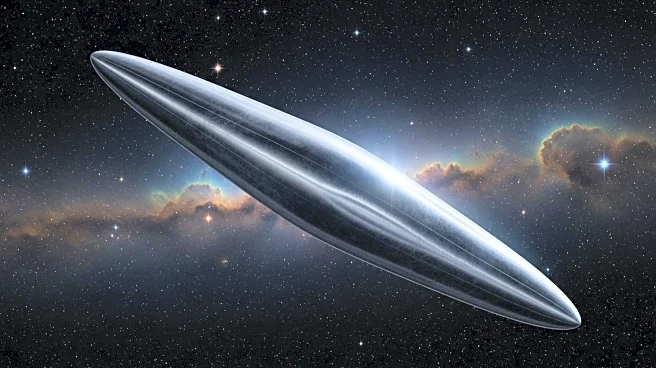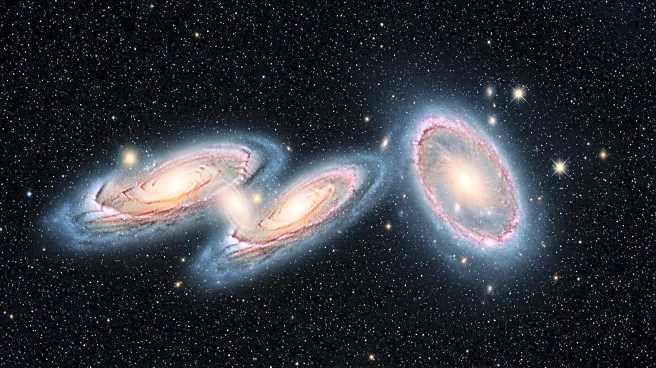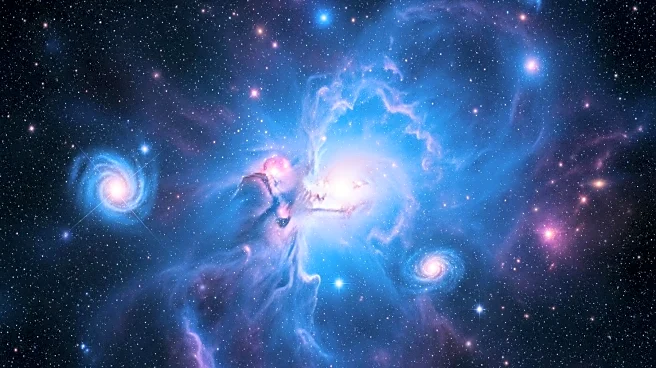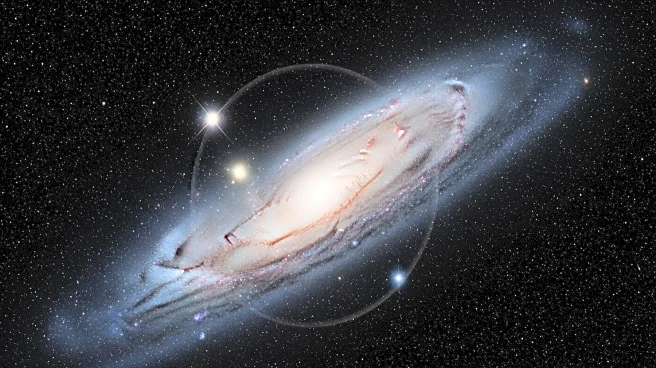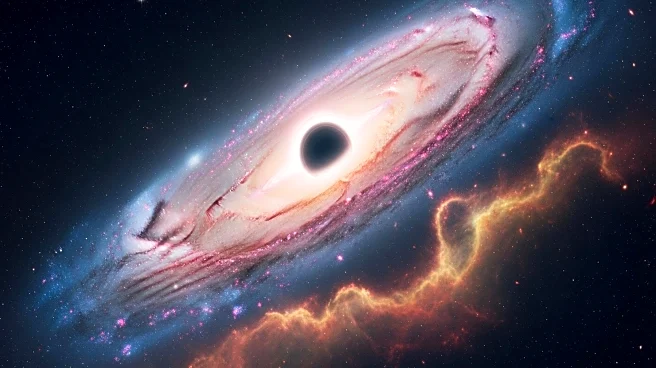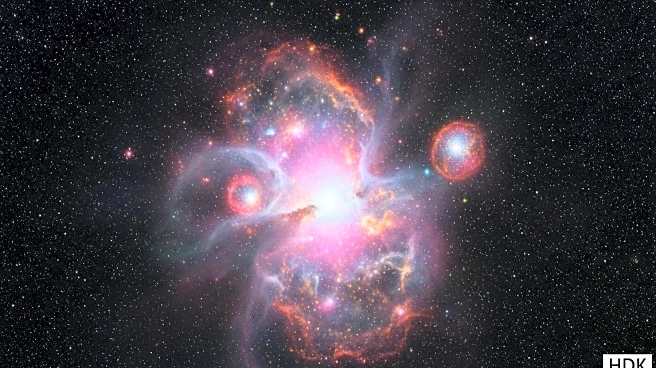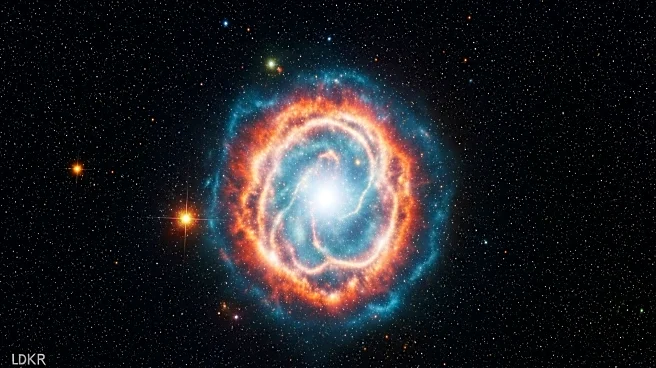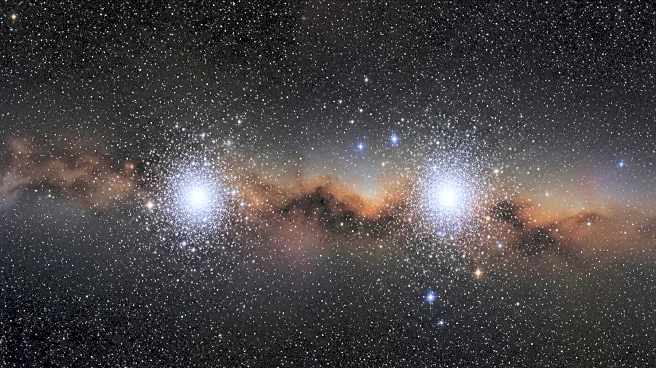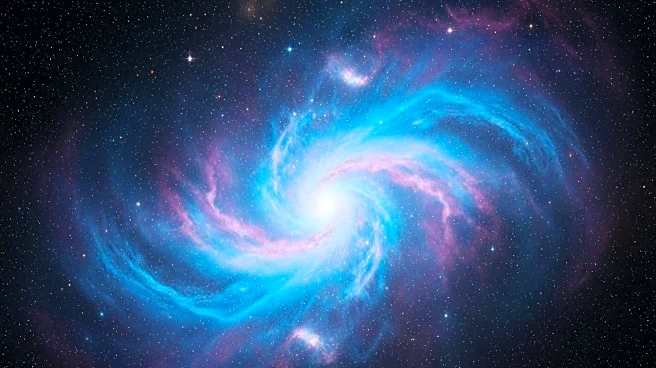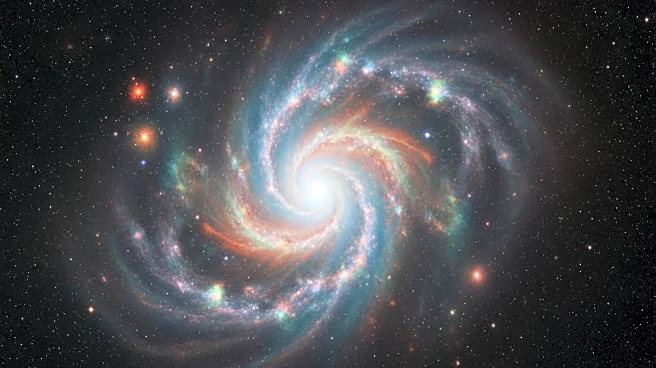What's Happening?
An international team of astronomers has conducted photometric and spectroscopic observations of a compact stellar system around the spiral galaxy NGC 7531. The study, led by David Martínez-Delgado, reveals that this system is an ultra-compact dwarf galaxy, designated NGC 7531-UCD1. Located 72.4 million light years away, NGC 7531 hosts a cloud of tidal stellar debris and a compact stellar system. The research aims to understand the nature of this system, its accretion history, and the formation of the shell-like structure surrounding it.
Why It's Important?
The findings provide insights into the formation pathways of ultra-compact dwarf galaxies, which are believed to evolve from nuclear star clusters through tidal stripping. Understanding these processes is crucial for comprehending galaxy evolution and the dynamics of stellar systems. The study contributes to the broader knowledge of how galaxies and their substructures interact and evolve over time, offering valuable information about the conditions under which stars form and galaxies develop.
What's Next?
Further research will focus on reconstructing the accretion history of NGC 7531-UCD1 and understanding the formation of its shell-like structure. The study may lead to new discoveries about the interactions between galaxies and their satellite systems, potentially influencing theoretical models of galaxy evolution. Continued observations could reveal more about the dynamics of ultra-compact dwarf galaxies and their role in the cosmic environment.
Beyond the Headlines
The investigation of NGC 7531-UCD1 highlights the importance of studying compact stellar systems and their interactions with host galaxies. The findings may have implications for understanding similar phenomena in other galaxies, offering insights into the processes that drive galaxy evolution and star formation.

